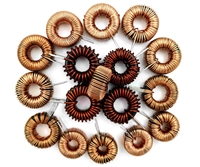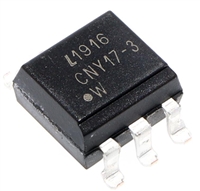Characteristic and use
By finding the difference or ratio of Ix1 to Ix2, the light input
1. Basic principle
position can be obtained by the formulas (1-3), (1-4), (1-7)
and (1-8) irrespective of the incident light intensity level
and its changes. The light input position obtained here cor-
responds to the center-of-gravity of the light beam.
A PSD basically consists of a uniform resistive layer
formed on one or both surfaces of a high-resistivity semi-
conductor substrate, and a pair of electrodes formed on
both ends of the resistive layer for extracting position
signals. The active area, which is also a resistive layer,
has a PN junction that generates photocurrent by means
of the photovoltaic effect.
2. One-dimensional PSD
Figure 2-1 Structure chart, equivalent circuit (one-dimensional PSD)
Figure 1-1 PSD sectional view
Rp
ANODE (X1)
X
B
X
A
OUTPUT IX1
OUTPUT IX2
P
D
C
j
Rsh
INCIDENT
LIGHT
ANODE (X
CATHODE
(COMMON)
2)
ELECTRODE X
2
PHOTOCURRENT
ELECTRODE X
1
P LAYER
I LAYER
P
D
C
: CURRENT GENERATOR
: IDEAL DIODE
: JUNCTION CAPACITANCE
N LAYER
j
Rsh: SHUNT RESISTANCE
Rp : POSITIONING RESISTANCE
COMMON
ELECTRODE
KPSDC0006EA
RESISTANCE LENGTH L
X
Figure 2-2 Active area chart (one-dimensional PSD)
KPSDC0005EA
LX
Figure 1-1 shows a sectional view of a PSD using a simple
illustration to explain the operating principle. The PSD has
a P-type resistive layer formed on an N-type high-resistive
silicon substrate. This P-layer serves as an active area for
photoelectric conversion and a pair of output electrodes
are formed on the both ends of the P-layer. On the
backside of the silicon substrate is an N-layer to which a
common electrode is connected. Basically, this is the
same structure as that of PIN photodiodes except for the
P-type resistive layer on the surface.
X
1
X2
x
ACTIVE AREA
KPSDC0010EA
Position conversion formula (See Figure 2-2.)
2x
I
I
X2 - IX1
=
........ (2-1)
When a spot light strikes the PSD, an electric charge
proportional to the light intensity is generated at the
incident position. This electric charge is driven through the
X1 + IX2
LX
In the above formula, IX1 and IX2 are the output currents
obtained from the electrodes shown in Figure 2-2.
resistive layer and collected by the output electrodes X
1
and X as photocurrents, while being divided in inverse
2
proportion to the distance between the incident position
and each electrode.
The relation between the incident light position and the
3. Two-dimensional PSD
Two-dimensional PSDs are grouped by structure into duo-
lateral and tetra-lateral types. Among the tetra-lateral type
PSDs, a pin-cushion type with an improved active area
and electrodes is also provided. (See “3-3”.) The position
conversion formulas slightly differ according to the PSD
structure. Two-dimensional PSDs have two pairs of output
photocurrents from the output electrodes X
the following formulas.
1, X2 is given by
When the center point of PSD is set at the origin:
L
2
X
LX
2
L
- X
A
+ XA
......... (1-1)
...... (1-2)
× Io
IX1
=
× Io
IX2
=
electrodes, X1, X2 and Y1, Y2.
L
X
X
I
X2 - IX1
2X
A
I
X1
LX - 2X
A .............. (1-4)
3-1 Duo-lateral type PSD
=
............ (1-3)
=
I
X1 + IX2
LX
IX2
LX
+ 2X
When the end of PSD is set at the origin:
- X
A
On the duo-lateral type, the N-layer shown in the sectional
view of Figure 1-1 is processed to form a resistive layer,
and two pair of electrodes are formed on both surfaces as
X and Y electrodes arranged at right angles. (See Figure
3-1.) The X position signals are extracted from the X elec-
trodes on the upper surface, while the Y position signals
are extracted from the Y electrodes on the bottom surface.
As shown in Figure 3-1, a photocurrent with a polarity op-
posite that of the other surface is on each surface, to pro-
duce signal currents twice as large as the tetra-lateral type
and achieve a higher position resolution. In addition, when
compared to the tetra-lateral type, the duo-lateral type of-
fers excellent position detection characteristics because
the electrodes are not in close proximity. The light input
position can be calculated from conversion formulas (3-1)
and (3-2).
L
X
B
XB
.
.
Io ................. (1-6)
IX1
=
Io ............. (1-5)
IX2
=
L
X
LX
IX2 - IX1
2XB
I
I
X1
L
X
- X
B ................ (1-8)
=
X ...... (1-7)
- L
=
IX1 + IX2
L
X
X2
XB
Io : Total photocurrent (IX1 + IX2
)
IX1: Output current from electrode X
1
IX2: Output current from electrode X
2
LX: Resistance length (length of the active area)
XA: Distance from the electrical center of PSD to the light input position
XB: Distance from the electrode X1 to the light input position
5










 压敏电阻器在直流电路中的过压保护应用探讨
压敏电阻器在直流电路中的过压保护应用探讨

 电感耐压值及其与电感大小的关系
电感耐压值及其与电感大小的关系

 CNY17F光耦合器:特性、应用、封装、引脚功能及替换型号解析
CNY17F光耦合器:特性、应用、封装、引脚功能及替换型号解析

 DS1307资料解析:特性、引脚说明、替代推荐
DS1307资料解析:特性、引脚说明、替代推荐
